Owls are birds of prey that have long owl-like faces, large wingspans, and strong bills. Owls have ear-shaped tufts of feathers on their heads that help them locate prey in the dark.
Owl species range from around 20 inches (50cm) in length to more than three feet (90cm). They are found all over the world except in Antarctica. Owls can be spotted near forests or grasslands with open areas for hunting or roosting at dusk.
The owls spotted in Arizona are great horned owls, barn owls, long-eared owls, short-eared owls, northern saw-whet owls, western screech-owls, whiskered screech-owls, Mexican spotted owls, northern pygmy owls, ferruginous pygmy owls, flammulated owls and burrowing owls.
Keep reading to discover all the ways on how to spot these owl species in Arizona.
Spotting Owls
There are a variety of owls that call Arizona home, each with its unique features and characteristics.
Most Common Owl In Arizona
Some of the most common owls in Arizona to spot in the state are great horned owls, barn owls, screech owls, northern saw-whet owls, and spotted owls.
- Great horned owls are large birds with a wingspan of up to 8 feet. They have a tuft of feathers on the tip of their small heads and a prominent tuft on their backs. They like open areas with access to prey but can also be found in wooded areas and deserts.
- Barn owls are a species of owl found throughout the world. They have round faces with small mouths and long legs. They can grow up to 10 inches long and have a wingspan of up to 7 feet. Barn owls prefer open areas with access to prey but can also be found in wooded areas and deserts.
- While Screech Owls may appear intimidating due to their large size and ear-like tufts, they are small birds known for their vocalizations. Their ear-like tufts help them locate prey, which is why they are often spotted near barns.
- Spotted Owl is another species of owl found throughout the world. It has a yellow-brown spotted body with a long pointed tail.

The great horned owl is one of the largest species of owl, growing up to 22 inches long with a wingspan of 6 feet 2 inches. Great horned owls prefer open areas with access to prey but can also be found in wooded areas and deserts
Farmers appreciate barn owls in Arizona because they keep rodents away from their barns, which helps to keep their produce safe.
Related Article: Owl Bird Feather Identification
Types of Owls in Arizona
In Arizona, there are 13 species of owls. Of those species, the northern saw-whet owl is the most commonly spotted owl in Arizona. This owl has a long, pointed face and a dark brown or black back. Its face is white with a black mask around its eyes and a white-tipped tuft of feathers on its forehead.
Related Article: Owl With No Feathers
Table of Owl Species in Arizona
| Species | Description |
|---|---|
| Northern Saw-whet Owl | Most commonly spotted owl in Arizona. It has a long, pointed face and a dark brown or black back. Its face is white with a black mask around its eyes and a white-tipped tuft of feathers on its forehead. Resembles a screech-owl and barn owl in appearance. Very noisy, creating a shrill call by fluttering its wings open and closed. |
| Western Screech Owl | Small owl found in woodlands, cacti areas, and desert areas of the state. It has a long, ear-shaped tuft of feathers on its forehead, a short, rounded face, and a yellowish body with brown spots on its underparts. |
| Elf Owl | Small owl with a spotted face, long legs, and bright yellow eyes. |
| Spotted Owl | Popular owl species in Arizona’s forests and grassland areas. It has a spotted face with large round eyes and short legs. It also has ear-shaped tufts of feathers on its head and a long white tuft extending from its chin. |
| Burrowing Owls | Small owls that live in burrows or under logs and debris throughout the state’s forests and grassland areas. They have ear-shaped tufts of feathers on their heads and long white tufts extending from their chins. |
| Great Horned Owl | Large owl found in woodlands, grasslands, deserts, or even open areas of the state. |
Great Horned Owl
Great Horned Owl also known as Bubo virginianus is a large owl, standing 27 to 32 cm in length with a wing span of about 122 inches making it the largest species for North America.
The great horned owl has long been considered one of several sub-species within this genus (although more recent research suggests that they may be two separate owls).
They are commonly found in North America, South America, and parts of Mexico. These birds have a wingspan of up to nearly a meter and a weight of up to 5 pounds. They are known for their loud screeching calls and for their ability to take prey of all sizes, including skunks, rabbits, and small birds up to the size of a crow.
These owls have a distinctive hoo-ooh-ooh call that they use to communicate with other owls in their colonies and hunt prey. Overall, the Great Horned Owl is a species that can be spotted in many areas of Arizona.
Barn Owl

Barn owls are a species of owl characterized by their white heart-shaped face and dark eyes. They are found throughout the entire state of Arizona, where they prey on a variety of small mammals, birds, and reptiles.
Barn owls in Arizona are known for their unique ability to locate small animals under dense bush or snow due to their excellent hearing. American barn owls are the largest species of barn owl and can weigh up to 1 pound 4 ounces.
They have a long tail and wingspan of up to 8 inches, making them one of the most conspicuous owls in a wide range of habitats across western North America. Their large size makes them a powerful predator and a valuable species for conservation efforts.
Related Article: A Black Bird with a Blue Head
Long-eared Owl

The Long-Eared Owl is a nocturnal predator that has prominent ear tufts and a wingspan of up to three feet. It has a large head, yellow eyes, and mottled brown and white plumage.
The species has distinctive V-shaped feather pattern on their faces, giving them their iconic long-eared appearance. This owl species prey on a variety of small mammals and birds, including bats, rodents, and birds.
Long-eared owls in Arizona are known to hunt from perches or by flying low over the ground. These owls can be found in woodlands throughout North and South America, where they spend most of their time searching for prey.
The female long-eared owl typically lays two to three eggs and the young owls fledge at about eight weeks of age.
Short-eared Owl

Short-eared owls are nocturnal predators with unique ear tufts that are heightened by feathers. They are medium-sized owls with rounded heads, no ear tufts, and bright yellow eyes.
These owls can be found in open habitats across North and South America, and are adept hunters of small mammals, such as mice, rats, and rabbits. Short-eared owls in Arizona have broad wings, short tails, and small eyes with dark markings around them.
They average approximately the size of a crow and have a distinctive sound due to their long legs and small bodies.
Short-eared owls are found almost everywhere in North and South America, including northern Mexico and Alaska. They are a common sight in cities because of their long-eared owl habitat – open spaces close to forests where they can hunt at night.
These owls have a distinctive call due to their long legs. They make a “kett-kett” or “ch-ch-ch-ch” sound when perching on a tree or perch during the day.
Northern Saw-whet Owl
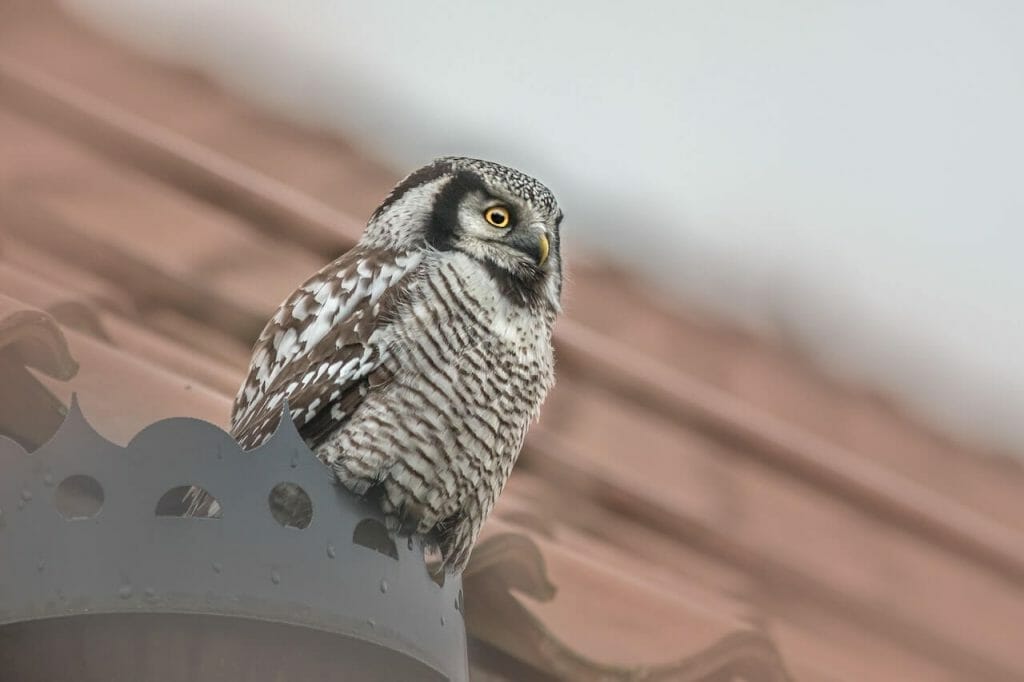
The Northern Saw-whet owl is a small owl with a large head and no ear tufts. It has bright yellow eyes and a black beak, with brown and white splattered feathers. The species is found in northern Arizona in the ponderosa pine forests.
It primarily feeds on small mammals such as mice and voles, but may also eat birds and large insects. This owl species measures between 7-8 inches long, with a wingspan of 16-18 inches.
Its small size makes it prey for larger owls, so it tends to stay away from open areas at night. Despite its small size, the saw-whet owl packs a powerful visual punch with its brightly colored eyes and striking facial features.
Western Screech-Owl

Western Screech-Owls are small owls with square-shaped heads and visible ear tufts. These owls have a wingspan between 21.6 and 24.4 inches and are brown, grey, or reddish-brown.
Their distinctive call is a speeding-up hoot that sounds like a bouncing ball coming to a stop. Western Screech-Owls inhabit forests, open woodlands, deserts, shrublands, and open fields in northern North America and parts of central Mexico.
They prey on small mammals, birds, reptiles, amphibians, and eggs. These owls are often seen flying high above forests at dusk looking for prey.
Whiskered Screech-owl
The Whiskered Screech-Owl is a small owl found in woodlands, canyons, and desert areas of Arizona. It has a gray-brown body with pale streaks on the breast and belly, wings and tail barred with gray, brown, and white.
The owl has a large head with a distinctive tuft of feathers on top of its skull. It has yellow eyes and a long, dark-barred tail. The screech-owl is identified by its small size, large head, bright eyes, and loud screech call.
This species has a short life expectancy; however, it is not known exactly how long a Whiskered Screech-Owl lives. It may have a life expectancy of unknown length due to the lack of research on this species.
Mexican Spotted Owl
The Mexican Spotted Owl is one of the three varieties of spotted owls and also one of the biggest owls in North America, with a wingspan of up to two meters and a weight of up to two kilograms.
The Mexican spotted owl is native to the western United States, ranging from Alaska south to northern Mexico.
These owls are characterized by dark brown feathers with white spots and a white X between their eyes. They are nocturnal and prey primarily on small mammals such as rodents and birds.
Mexican spotted owls typically live in mature forests near steep canyons and canyonlands. They are known for their ability to live in areas of extreme habitat loss or degradation, thus making them an important species conservation priority.
The species has been on the endangered species list since 1987 due to the loss of its habitat and population decline, but efforts by organizations such as the U.S. Fish and Wildlife Service have helped it recover.
Northern Pygmy Owl
The Northern Pygmy Owl is a small owl found in the forests and woodlands of North America. It has a wingspan of about 19-25 inches and a body mass of about 2-4 ounces.
The northern pygmy owl is light brown, with darker brown streaks and white spots. This species has large, round eyes and feathered legs down to the toes. It feeds on small mammals such as mice and voles.
The northern pygmy owl is a diurnal hunter but also hunts at dawn and dusk. This species is a threatened species due to habitat loss and modifications as well as disturbance from human activities.
However, through conservation efforts, this owl species have shown some recovery rates over the last few decades [103, 104].
Ferruginous Pygmy Owl
The Ferruginous Pygmy Owl is a small owl, with a wingspan of up to 25 centimeters. It has a rust-colored plumage and a stocky build.
The owl typically has a dark facial disk and a short, rounded brown-spotted tail. The Ferruginous Pygmy Owl is known to reproduce in central and southern Arizona and can be seen in trees or desert areas, depending on its food source.
The eyes of the pygmy owl are small and placed near the center of its face, which gives it an owl-like appearance. It has long legs relative to its body size which help it maneuver in wooded areas.
The pygmy owl is crepuscular, meaning it is most active at dusk and dawn. This species feeds mostly on small mammals, birds, reptiles, and insects; however, it will also eat fruits and seeds. It prefers to nest in tree cavities or other protected areas such as cacti or saguaro cacti.
Flammulated Owl
The flammulated owl is a small owl with a wingspan of around 15 inches and a body length of 5.9 to 6.7 inches. These owls are gray or rufous in color and have dark eyes, white eyebrows, and a rectangular-shaped head.
They mainly eat large insects such as beetles, moths, and spiders, as well as scorpions and sometimes small mammals such as shrews and mice. They are usually found in coniferous forests in areas of western Arizona.
However, they do migrate south into Mexico for the winter. Flammulated owls are a prey species of great interest to biologists studying owl ecology, behavior, and population trends.
Burrowing Owl
The burrowing owl (also known as cunicularia) is a widely distributed medium-sized owl with a Holarctic distribution. It occurs on all continents except Africa and Australia; there are three recognised subspecies: Athene cunicularia cunicularia, Athene cunicularia minimus and Athene cunicularia maximus.
Athene species in general have creamy-coloured pelages or resting plumage that turns greyish brown during moul.
Burrowing owls, from the Strigidae family, are a species of owl found in northern Arizona and southern Utah year-round. They typically nest and roost in burrows made by other burrowing animals, such as ground squirrels and prairie dogs, as a defensive strategy.
Burrowing owls in Arizona are known for their unique raspy hoot call and are also known to make rattling and hissing noises to ward off potential threats.
These owls are small but powerful birds with long wings and a wingspan of up to 3 feet. They have a soft dual-note hoot call and can often be spotted around airports, roads, golf courses, parks, and farmlands.
Burrowing owls are small owls with short tuft of feathers on their heads that help them burrow into holes more easily.
Elf Owl
Elf Owls are one of the smallest owls in the world, which can be identified by their small size of 6 inches and a round head with a large eye. These owls are very secretive and are found in Arizona during the summer and winter.
They typically nest in cavities in cacti or trees and can be spotted in woodlands, deserts, and grasslands throughout the state.
Elf Owls are a common species of owl found in Arizona. They are a unique species of owl as they can be identified by their small size of 6 inches and a round head with a large eye.
These owls are very secretive and are commonly spotted in woodlands, deserts, and grasslands throughout the state. They typically nest in cavities in cacti or trees, where they can be spotted in woodlands, deserts, and grasslands throughout Arizona.
The Biggest Owl In North America
The largest owl in North America is the Great Horned Owl. It is sometimes called the cat owl and is found in mountains, grasslands, conifer forests, deserts, chapparals, and many other habitats in North and South America.
The Great Horned Owl is heavily built, with a barrel-shaped body, a large head, and broad wings.
Its size can vary considerably across its range, with populations in interior Alaska and Ontario being largest and populations in California and Texas being smallest, though those from the Yucatán Peninsula and Baja California appear to be even smaller.
Adult Great Horned Owls range in length from 43 to 64 cm (17 to 25 in), with an average of 55 cm (22 in), and possess a wingspan of 91 to 153 cm (3 ft 0 in to 5 ft 0 in), with an average of 122 cm (48 in). Females are somewhat larger than males
Conclusion
Owls are great birds of prey that deserve a bit of attention. They are small but mighty. They hunt at dusk or dawn and are well-equipped to do so thanks to their eyesight and hearing.
When you spot owls in Arizona, be sure to give them a wide berth and a safe flight. If you have a barn owl, short-eared owl, burrowing owl, great horned owl, long-eared owl, northern saw-whet owl, western screech-owl, spotted owl or an elf owl in your yard, they are a sign of a healthy environment and a species that is thriving.
Frequently Asked Questions
What attracts owls to your property?
Owls are attracted to areas with plenty of prey, which can include songbirds, squirrels, and insects. By providing nesting boxes on trees, poles, or fences, you can encourage owls to take up residence on your property.
Leaving brush, wood piles, and old lawn trimmings can also provide homes for voles, field mice, rabbits, gophers, and snakes.
This in turn increases the chances of owls visiting. Setting up a bird feeder and getting a bird bath can also attract owls.
Do Owls in Arizona come out during the day?
No, owls do not come out during the day in Arizona. Owls are nocturnal predators that are usually active during the night in this region.
Some owl species, such as barn owls, may be spotted during the day in the Sonoran Desert region.
However, flammulated owls, a common owl species in Arizona, are generally nocturnal and difficult to find during the day due to their well-camouflaged feathers.
What is the biggest Owl in Arizona?
The biggest owl found in Arizona is the Great Horned Owl. This owl can have a wingspan of up to 57.1 inches, making it the largest owl in the state by a considerable margin.
In addition to being the biggest owl found in Arizona, the Great Horned Owl is a well-adapted predator that can thrive in a variety of habitats. It is the main predator responsible for keeping the jackrabbit and cottontail populations down in Arizona.
As long as you are aware of where these owls typically reside and what they look like, you should be just fine when it comes to spotting one during your travels in the state.
Great Horned Owls start to hunt at dusk and feed throughout the night. They can live up to 28 years in the wild, and even longer in captivity.
Are Owls protected in Arizona?
Yes, owls in Arizona are protected by state law and the Migratory Bird Treaty Act. This means that you cannot harm or harass owls in any way, shape, or form.
Owls can be seen throughout Madrean Sky Islands, Ponderosa Pine Forest, and Madera Canyon. Burrowing Owls are only found in dry grasslands, deserts, or agricultural areas (except for the extreme northwest corner and the White Mountains).
There are a total of 12 owl species in Arizona – 8 of which are found in the state. These include barn owls, northern saw-whet owls, great horned owls, spotted owls, northern pygmy owls, western screech owls, long-eared owls, northern harpy owls, and barn owls.
If you knowingly break the laws protecting owls, you may end up facing legal action. However, even if you’re caught breaking the law, it’s still important to support owl conservation and awareness as a way of showing your respect for these amazing creatures.
What does it mean when you see an Owl?
When you see an owl, it may mean different things to different people depending on their culture and beliefs.
For example, in some cultures, owls are associated with bad luck, death, or darkness. However, others believe owls symbolize wisdom, good fortune, and magic.
To spot a great horned owl, look for a matching pair of tufts on either side of its head.




![How to Keep Birds Off Your Boat: Ways and [Best] Deterrents to Keep Birds Away From Your Boat](https://ekz2dfuukk8.exactdn.com/storage/2023/05/how-to-keep-birds-of-your-boat-870x570.jpg?strip=all&lossy=1&ssl=1)






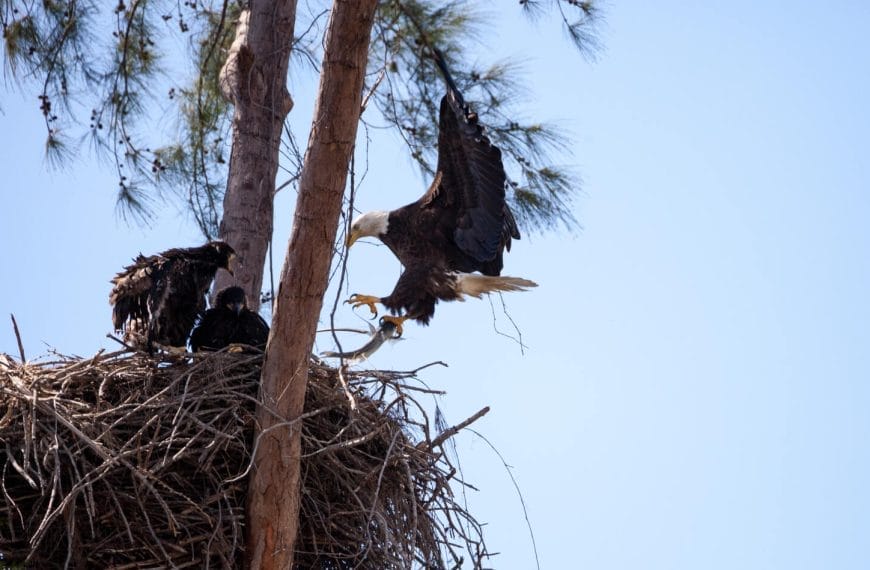


![How to Identify Turkey Feathers [Ultimate Guide]](https://ekz2dfuukk8.exactdn.com/storage/2023/03/HOW_TO_IDENTIFY_TURKEY_FEATHERS-793x570.jpg?strip=all&lossy=1&ssl=1)

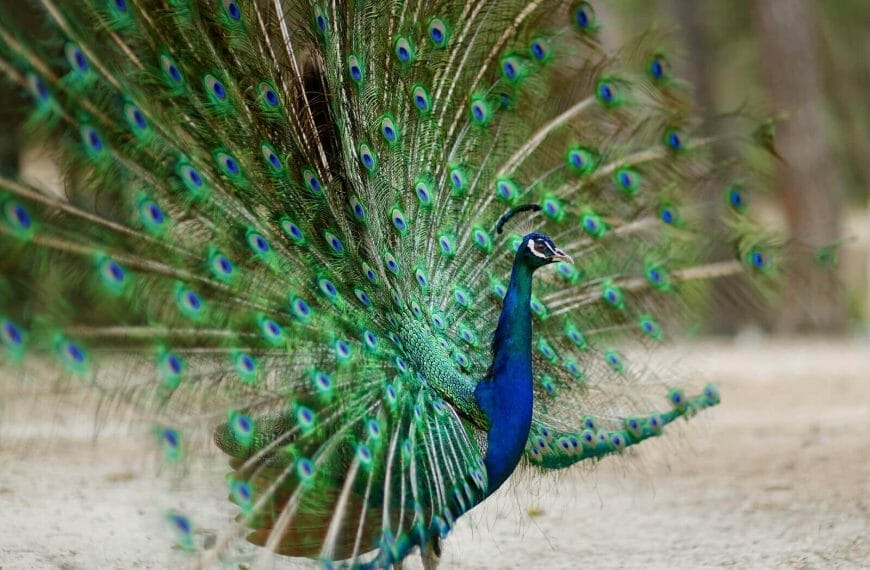





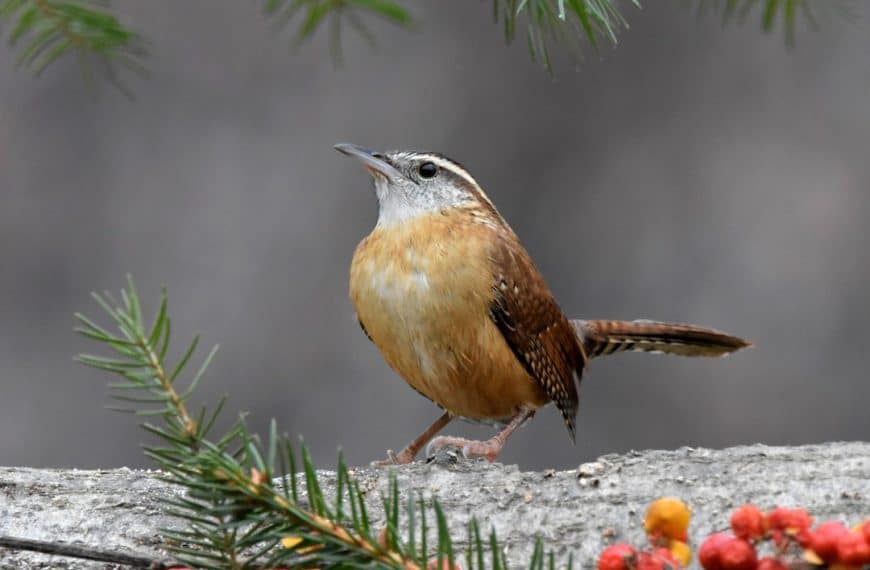
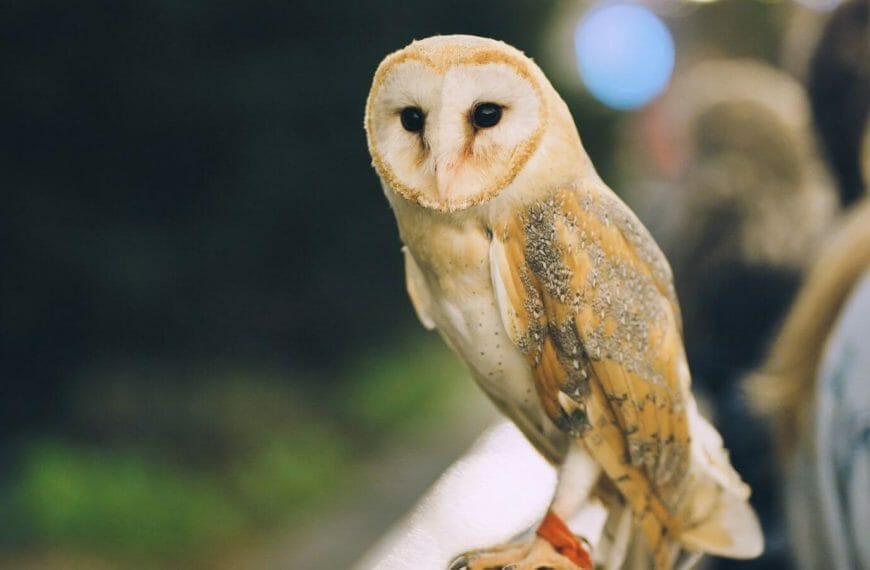

![How to Attract Ravens to Your Yard: The [Complete] Guide to Attracting these Beautiful Birds to your Backyard](https://ekz2dfuukk8.exactdn.com/storage/2023/10/How-to-Attract-Ravens-to-Your-Yard.jpg?strip=all&lossy=1&ssl=1)



![How to Identify Turkey Feathers [Ultimate Guide]](https://ekz2dfuukk8.exactdn.com/storage/2023/03/HOW_TO_IDENTIFY_TURKEY_FEATHERS.jpg?strip=all&lossy=1&ssl=1)

